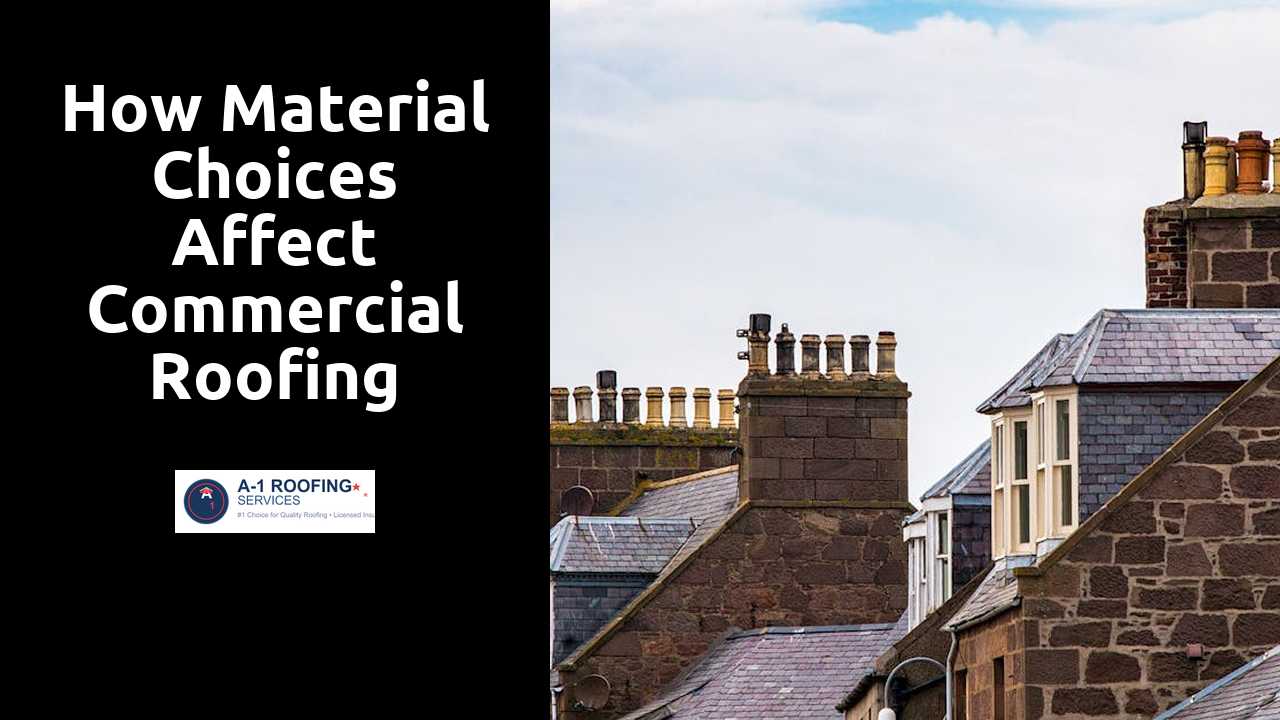
How Material Choices Affect Commercial Roofing Expenses
Table Of Contents
Climate and Environmental Factors
The type of climate and environmental conditions prevalent in a region significantly influence the choice of roofing materials. Areas prone to heavy rainfall, snow, or extreme temperatures require materials that can withstand these conditions. For instance, metal roofing is often favored in snowy regions due to its ability to shed snow effectively, while asphalt shingles provide a reliable option in temperate climates where moderate weather is typical.
Additionally, environmental factors such as UV exposure, humidity levels, and wind speeds also dictate material performance and longevity. Roofs in sunny climates benefit from materials designed to resist ultraviolet degradation, while those in hurricane-prone areas may need to prioritize wind-resistant options. Each climate presents unique challenges that must be addressed to ensure durability, thereby impacting overall roofing costs and long-term maintenance needs.
Discover more here.
Material Choices for Specific Weather Conditions
Weather conditions play a crucial role in determining which roofing materials are most suitable for commercial properties. In areas prone to heavy rainfall, materials with high resistance to water intrusion are essential. EPDM rubber roofing offers excellent waterproofing capabilities, making it a popular choice for regions with significant precipitation. Similarly, in areas that experience intense sunlight and heat, reflective roofing options, such as thermoplastic polyolefin (TPO) or PVC, can help reduce energy costs and protect the underlying structure from heat damage.
Regions experiencing high winds and storms require roofing materials engineered for durability and resilience. Metal roofing systems are known for their ability to withstand extreme weather conditions, including hurricanes and heavy snowfall. Additionally, composite shingles may be designed with enhanced wind resistance, providing a reliable option in tumultuous climates. Property owners must carefully consider the local weather patterns and select materials that not only fit their budget but also ensure long-term protection against the elements.
Installation Expenses
The installation of commercial roofing systems can vary significantly based on the material selected. For instance, materials like TPO or EPDM are known for their lighter weights and easier handling. This can lead to lower installation costs compared to heavier materials, which may require additional equipment and labor. Furthermore, some roofing materials require specialized installation techniques, which can significantly impact the overall expense.
Labor costs play a crucial role in the overall expense of installing a roofing system. Skilled labor is often needed for more complex installations, such as those involving slate or metal roofing, which can drive up project costs. In contrast, simpler materials may be installed by less specialized workers, potentially reducing labor expenses. Additionally, factors such as local labor rates and the availability of skilled workers can further influence installation costs across different regions.
Labor Costs Associated with Different Materials
The choice of roofing materials plays a significant role in determining labor costs during installation. Some materials, like metal and slate, often require specialized skills and tools for proper installation. This expertise can drive up labor expenses, as contractors may demand higher rates for their services. Additionally, the complexity of working with certain materials, such as built-up roofing or certain synthetic membranes, can extend installation timeframes and influence labor costs.
On the other hand, more straightforward materials like asphalt shingles are generally easier to install. They can be laid down quickly, which helps to minimize labor costs. However, choosing conventional materials may come with considerations related to long-term performance and maintenance that could impact overall expenditures. Evaluating the balance between material choice and labor implications is crucial for effective budget planning in commercial roofing projects.
Insurance and Liability Considerations
Choosing the right roofing material not only impacts installation costs but also plays a crucial role in insurance coverage and liability considerations. Certain materials may be more susceptible to damage from natural disasters, which can lead to higher premiums or exclusions from coverage. Insurers often evaluate the risk associated with specific materials, and this assessment can affect the overall cost and availability of policies. A roofing material with a proven track record of durability in severe weather can offer significant benefits in terms of both risk management and financial protection.
Liability issues can arise during the installation and throughout the life of a roofing system. Using materials that are known for their safety and longevity can minimize potential claims related to damages or failures. Proper material selection also aligns with industry standards and regulations, reducing legal risks. In some cases, insurance providers may require compliance with specific material guidelines to ensure coverage, highlighting the vital connection between material choices and liability protection.
Impact of Material Selection on Coverage
Insurance policies for commercial roofs can vary significantly based on the materials chosen for installation. Certain materials may qualify for better coverage or lower premiums due to their durability and fire resistance. For example, metal roofing often receives favorable terms from insurers due to its resilience against severe weather events. Conversely, less durable materials might lead to higher risks of damage, which can result in elevated premiums or limited coverage options.
Selecting high-quality materials may not only enhance the longevity of a roof but also have a positive impact on insurance claims. In instances where robust materials are used, insurers may perceive a lower risk of frequent claims. This can foster a relationship of trust between property owners and insurance companies. Additionally, using environmentally-friendly materials may also attract coverage incentives, reflecting the growing awareness of sustainability issues in the insurance landscape.
Related Links
Key Components Influencing Commercial Roofing PricingAnalyzing the Financial Implications of Commercial Roofing Projects